-
Book Suggestions
Books for Parents:Parenting with Love and Logic: Teaching Children Responsibility By: Foster ClineThis parenting book shows you how to raise self-confident, motivated children who are ready for the real world. Learn how to parent effectively while teaching your children responsibility and growing their character. Establish healthy control through easy-to-implement steps without anger, threats, nagging, or power struggles.Helping Your Anxious Child: A Step By Step Guide for ParentsBy: Ronald W. RapeeMost children are afraid of the dark. Some fear monsters under the bed. But 10 percent of children have excessive fears and worries—phobias, separation anxiety, panic attacks, social anxiety, or obsessive-compulsive disorder—that can hold them back and keep them from fully enjoying childhood. If your child suffers from any of these forms of anxiety, the program in this book offers practical, scientifically proven tools that can help.Now in its second edition, Helping Your Anxious Child has been expanded and updated to include the latest research and techniques for managing child anxiety. You’ll learn how to help your child overcome intense fears and worries and find out how to relieve anxious feelings while parenting with compassion.Helping Your Child Overcome Separation Anxiety or School RefusalBy: Andrew R. Eisen & Linda B. EnglerDoes your child cling to you whenever you try to leave? Does he or she react strongly to the thought of being left alone? Psychologists call this kind of behavior separation anxiety, and it's usually a normal part of your child's developmental process — one that they outgrow. Sometimes, though, extreme or persistent kinds of separation anxiety can make life difficult for both you and your child. In some cases, separation anxiety issues can lead a child to be reluctant to get ready for school or, worse, to simply refuse to go at all. This behavior, called school refusal, comes with its own set of challenges. This book shows you how to identify when your child's separation anxiety or school refusal is more than just a phase and offers effective tools that you can use to manage your child's anxiety. Real-life stories about other children facing these challenges will help you keep your situation in perspective and remember that, with patience and persistence, your child will overcome his or her anxiety.The Unwritten Rules of Friendship: Simple Strategies to Help Your Child Make FriendsBy: Natalie Madorsky, PH.D and Eileen Kennedy-Moore, PH.DThis practical and compassionate handbook draws on the authors' experience working with thousands of children to offer you as a parent (or teacher or caregiver) tools you can use - including practical activities, games, and exercises - to identify a child's social strengths and to sharpen any child's social skills.Nearly every child has trouble with social relationships in some way, at some time. Some children feel awkward in groups. Some have trouble resolving arguments. Some stick out in such a way that they become natural targets for bullies. And some seem virtually incapable of making friends. No matter what your child's situation - whether he or she is a born leader or a constant complainer, a wallflower or an unwitting aggressor, a poor sport or a perfectionist - you'll recognize your child's struggles in the case studies in this book. You'll discover why certain children don't "get" particular social conventions, and you'll learn simple strategies for increasing your child's awareness of the unspoken underpinnings of social interactions - knowledge that is essential to building, sustaining, and repairing relationships.NutureShockBy: Po Bronson and Ashley MerrymanFrom the Book Jacket: "Nobody likes me" is a complaint that parents hear all too often, and few utterances make them feel more helpless. What can a parent do for a child who feels isolated, rejected, or out of sync with his or her peers?This practical and compassionate handbook draws on the authors' experience working with thousands of children to offer you as a parent (or teacher or caregiver) tools you can use - including practical activities, games, and exercises - to identify a child's social strengths and to sharpen any child's social skills.Nearly every child has trouble with social relationships in some way, at some time. Some children feel awkward in groups. Some have trouble resolving arguments. Some stick out in such a way that they become natural targets for bullies. And some seem virtually incapable of making friends. No matter what your child's situation - whether he or she is a born leader or a constant complainer, a wallflower or an unwitting aggressor, a poor sport or a perfectionist - you'll recognize your child's struggles in the case studies in this book. You'll discover why certain children don't "get" particular social conventions, and you'll learn simple strategies for increasing your child's awareness of the unspoken underpinnings of social interactions - knowledge that is essential to building, sustaining, and repairing relationships.The Bully, the Bullied and the Bystander: How Parents & Teachers Can Help break the CycleBy: Barbara ColorosoThe Bully, the Bullied and the Bystander , by Barbara Coloroso, features advice and tips that can be utilized immediately to deal with bullying at home or school. This book is best for teachers and parents, but it might be helpful for an adult to share some of the information with kids, like the tips about how to handle a bully or what constitutes bullying. Since a 2001 Kaiser Family Foundation survey showed that three out of four preteens saw bullying daily, kids might find the advice particularly handy.Coloroso makes an important distinction between the bully, the bullied and the bystander and the mixed feelings of innocence, responsibility and guilt that those people may feel. Another important insight is Coloroso's analysis of why kids don't tell adults about problems with bullies, and the difference between telling and tattling.Children's Books: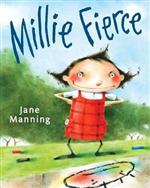 Author/Illustrator: Jane ManningInterest Level: Ages 5 and UpFrom the Book Jacket:
Author/Illustrator: Jane ManningInterest Level: Ages 5 and UpFrom the Book Jacket:Millie is quiet. Millie is sweet. Millie is mild. But the kids at school don't listen to her. And she never gets a piece of birthday cake with a flower on it. And some girls from her class walk right on top of her chalk drawing and smudge it. And they don't even say they're sorry! So that's when Millie decides she wants to be fierce! She frizzes out her hair, sharpens her nails and runs around like a wild thing. But she soon realizes that being fierce isn't the best way to get noticed either, especially when it makes you turn mean. So Millie decides to be nice--but to keep a little of that fierce backbone hidden inside her. In case she ever needs it again. With bright art and an adorable character, it's easy to empathize with Millie. Because everyone has a bad day, once in a while.
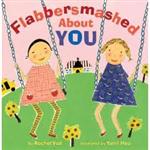 Author: Rachel VailInterest Level: Ages 5 and UpFrom the Publisher:Readers first met Katie Honors in Rachel and Yumi'sSometimes I'm Bombaloo and Jibberwillies at Night. Now Katie is back as she deals with feeling "flabbersmashed" by her best friend, who suddenly wants to be friends with another kid. We've all been flabbersmashed by a friend--left out of an activity or secret, left to feel sorry for ourselves, or move on. Will Katie ever stop feeling left out?
Author: Rachel VailInterest Level: Ages 5 and UpFrom the Publisher:Readers first met Katie Honors in Rachel and Yumi'sSometimes I'm Bombaloo and Jibberwillies at Night. Now Katie is back as she deals with feeling "flabbersmashed" by her best friend, who suddenly wants to be friends with another kid. We've all been flabbersmashed by a friend--left out of an activity or secret, left to feel sorry for ourselves, or move on. Will Katie ever stop feeling left out? Author: Rosemary Wells
Author: Rosemary WellsInterest Level: Ages 8 and Up
From the Book Jacket:When Jenny was little, Grandfather taught her how to button her buttons and how to write J for her name. When she was a little older, Grandfather took her to try on the expensive dresses at the stylish Mouse Boutique, hidden deep in the ductwork of the Jordan Marsh department store. And during long summer afternoons at Revere Beach, Grandfather taught Jenny the names of seashells.But one day Grandfather was gone. Every mouse in Boston, including Jenny, went to his funeral high in the belfry of the cathedral. So how can it be that Jenny begins to spot Grandfather about town - turning a corner, sitting on a park bench? Could it really be that Grandfather is still out there somewhere, roaming the city he loved? Jenny can't help but run after the familiar silver whiskers, hoping...grandparent can make a child sad but also brings up all the wonderful happy times. Be prepared for lots of share outs and discussion.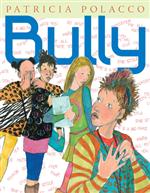 By Patricia PolaccoInterest Level: Ages 7 and UpFrom the Publisher:Patricia Polacco takes on cliques and online bullying. Lyla finds a great friend in Jamie on her first day of school, but when Lyla makes the cheerleading squad and a clique of popular girls invites her to join them, Jamie is left behind. Lyla knows bullying when she sees it, though, and when she sees the girls viciously teasing classmates on Facebook, including Jamie, she is smart enough to get out. But no one dumps these girls, and now they're out for revenge.
By Patricia PolaccoInterest Level: Ages 7 and UpFrom the Publisher:Patricia Polacco takes on cliques and online bullying. Lyla finds a great friend in Jamie on her first day of school, but when Lyla makes the cheerleading squad and a clique of popular girls invites her to join them, Jamie is left behind. Lyla knows bullying when she sees it, though, and when she sees the girls viciously teasing classmates on Facebook, including Jamie, she is smart enough to get out. But no one dumps these girls, and now they're out for revenge.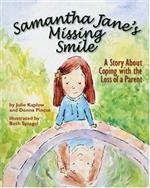 Author: Julie Kaplow and Donna PincusInterest Level: Ages 4-8About This Book:The loss of a parent is a profound crisis for a child. In the aftermath of the death, children face great emotional vulnerability and distress and need help from their surviving parent and other supportive adults around them. Reassurance and support, as well as practical coping tools, are key to the child's ability to recover.Samantha Jane's Missing Smile is the story of one child's loss. When her father dies, Sammy Jane doesn't know how to express her grief. She fears that her sadness will overwhelm her if she cries. She worries that her sadness will overburden her mother, too, and that her mother won't be available for her. She is angry at the unfairness of her loss. And she feels guilty about smiling ever again.In this gentle story, Sammy Jane comes to accept her feelings and realizes that they won't go away if she ignores them. She also discovers that sharing those feelings is both comforting and reassuring. With her mother's help, she finds ways to keep the memory of her father alive. And finally, she understands what a full, happy life is what her father would want for her.
Author: Julie Kaplow and Donna PincusInterest Level: Ages 4-8About This Book:The loss of a parent is a profound crisis for a child. In the aftermath of the death, children face great emotional vulnerability and distress and need help from their surviving parent and other supportive adults around them. Reassurance and support, as well as practical coping tools, are key to the child's ability to recover.Samantha Jane's Missing Smile is the story of one child's loss. When her father dies, Sammy Jane doesn't know how to express her grief. She fears that her sadness will overwhelm her if she cries. She worries that her sadness will overburden her mother, too, and that her mother won't be available for her. She is angry at the unfairness of her loss. And she feels guilty about smiling ever again.In this gentle story, Sammy Jane comes to accept her feelings and realizes that they won't go away if she ignores them. She also discovers that sharing those feelings is both comforting and reassuring. With her mother's help, she finds ways to keep the memory of her father alive. And finally, she understands what a full, happy life is what her father would want for her.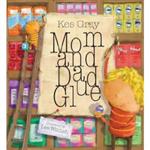 Author: Kes Gray
Author: Kes Gray
Interest Level: K-3
About the Book: Divorce is an unhappy fact that affects many children's lives, and the story told in this picture book was written for just such little boys and girls. Its message can help soothe their feelings and make them aware that their parents' separation is in no way their fault. A little boy tells his story in simple verse as he discovers that . . .
"My mom and dad are broken,
I don't know what to do.
My mom and dad have come undone,
I need to find some glue."
He goes into a store that sells many different kinds of glue, but of course, there is no glue that will repair a broken marriage. With some gentle words from the store's proprietress, he learns that he can pull his life together and smile again. Parents who are divorcing will value this book as a story they can read to their child and help him understand that although their marriage has not worked out, they still love him as they always have and always will.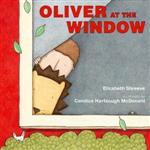 Author: Elizabeth ShreeveInterest Level: Ages 4-8
Author: Elizabeth ShreeveInterest Level: Ages 4-8
From the Book Jacket: When his parents separate Oliver must brave many new changes. He shuffles back and forth between his parents' homes. And now he goes to preschool every day. He doesn't know the kids there or his new teacher. Isolated and alone at first, Oliver slowly becomes part of the gang. Eventually he's able to help the newest student feel welcome at school. And his lion stays with Oliver everywhere he goes, giving him just the thing he needs to adjust to all the changes: courage.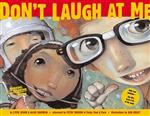 Author: Steve SeskinInterest Level: K-5From the Book Jacket:Do you wear glasses? Ever been picked last for the team? Afraid you'll be called on in class? Have you laughed at someone else for the same reasons? Someone you thought was geeky or slow - someone different from you. For anyone who's ever been bullied - it's time to change your tune. This is not a book for whiners, but a new language that will give you the words you need to take charge and stop the cycle of teasing.
Author: Steve SeskinInterest Level: K-5From the Book Jacket:Do you wear glasses? Ever been picked last for the team? Afraid you'll be called on in class? Have you laughed at someone else for the same reasons? Someone you thought was geeky or slow - someone different from you. For anyone who's ever been bullied - it's time to change your tune. This is not a book for whiners, but a new language that will give you the words you need to take charge and stop the cycle of teasing.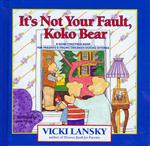 Author: Vicki LanskyIt's Not Your Fault, Koko Bear is a picture book designed to be read by parents to their children. Koko Bear's parents are getting a divorce, and Koko, a preschool-aged unisex bear, isn't happy about it. "I don't like this divorce. I don't want two homes," Koko says. Koko Bear's story doesn't minimize kids' pain, but it doesn't wallow in it either.The message is positive: children are reassured that their feelings are natural, that their parents still love and will care for them, and that the divorce is not their fault. At the bottom of each page, there are bullet points for parents that give information and advice about what the kids are going through, and the best way to handle each issue as it arises.
Author: Vicki LanskyIt's Not Your Fault, Koko Bear is a picture book designed to be read by parents to their children. Koko Bear's parents are getting a divorce, and Koko, a preschool-aged unisex bear, isn't happy about it. "I don't like this divorce. I don't want two homes," Koko says. Koko Bear's story doesn't minimize kids' pain, but it doesn't wallow in it either.The message is positive: children are reassured that their feelings are natural, that their parents still love and will care for them, and that the divorce is not their fault. At the bottom of each page, there are bullet points for parents that give information and advice about what the kids are going through, and the best way to handle each issue as it arises.
Select a School...
Select a School
- Alcott Elementary School
- Almeda Elementary
- Alternative Certification Program
- Anderson Elementary School
- Arabic Immersion Magnet School (AIMS)
- Ashford Elementary
- Askew Elementary School
- Atherton Elementary
- Attucks Middle School
- Austin High School
- Baker Montessori
- Barbara Bush Elementary
- Barbara Jordan Career Center
- Barrick (C. E.) Elementary
- Bastian Elementary School
- Baylor College of Medicine Academy at James D Ryan MS
- Baylor College of Medicine Biotech Academy at Rusk
- Bellaire High School
- Bellfort Early Childhood Center
- Benavidez Elementary
- Benbrook Elementary
- Berry Elementary
- Billy Reagan K8 Educational Center
- Frank Black Middle School
- Blackshear Elementary
- Bonham Elementary School
- Bonner Elementary
- Braeburn Elementary
- Briargrove Elementary School
- Briarmeadow Charter
- Briscoe Elementary
- Brookline Elementary
- Browning Elementary
- Bruce Elementary
- Burbank Elementary
- Burbank Middle
- Burrus Elementary
- Cage Elementary
- Career Readiness
- Carnegie Vanguard High School
- Carrillo Elementary
- Challenge Early College High School
- Clemente Martinez Elementary School
- Clifton Middle School
- Codwell Elementary
- Community Services
- Condit Elementary
- Coop Elementary
- Cornelius Elementary
- Crespo Elementary
- Crockett Elementary School
- Cullen Middle School
- Cunningham Elementary
- César E. Chavez High School
- Daily, Ray K. Elementary
- David G. Burnet Elementary
- Davila Elementary
- De Chaumes Elementary
- De Zavala Elementary
- Deady Middle School
- DeAnda Elementary School
- Distrito Escolar Independiente de Houston
- Dogan Elementary School
- Durham Elementary
- Durkee Elementary
- East Early College High School
- Eastwood Academy
- Edison Middle School
- Elementary DAEP
- Eliot Elementary School
- Elmore Elementary School
- Elrod Elementary School
- Emerson Elementary
- Energized for Excellence
- Energy Institute High School
- McGowen Elementary
- Farias ECC
- Cook Elementary
- Field Elementary School
- Fleming Middle School
- Foerster Elementary
- Fondren Elementary
- Fondren Middle School
- Fonville Middle School
- Fonwood Early Childhood Center
- Forest Brook Middle School
- Franklin Elementary
- Frost Elementary
- Furr High School
- Gabriela Mistral CEC
- Gallegos Elementary
- Garcia Elementary School
- Garden Oaks Montessori
- Garden Villas Elementary
- Golfcrest Elementary
- Gregg Elementary
- Gregory-Lincoln Education Center
- Gross Elementary
- Halpin Early Childhood Center
- Hamilton Middle School
- Harper DAEP High School
- Harris (John R.) Elementary
- Harris (Roland P.) Elementary School
- Hartman Middle School
- Hartsfield Elementary School
- Harvard Elementary School
- Health and Medical Services
- Heights High School
- Helms Elementary School
- Herod Elementary School
- Herrera Elementary School
- High School Ahead Academy Middle School
- High School for Law and Justice (HSLJ)
- Highland Heights Elementary
- Hilliard Elementary School
- Hines Caldwell Elementary School
- HISD Benefits
- HISD Human Resources
- HISD Miles Ahead Scholars
- HISD School Choice
- HISD School Website Resources
- Hobby Elementary School
- Hogg Middle School
- Holland Middle School
- Horn Elementary
- Houston Academy for International Studies
- Isaacs Elementary
- J.P. Henderson Elementary
- Long Academy
- Janowski Elementary
- Jefferson Elementary School
- John G. Osborne Elementary
- Jones Futures Academy
- Kashmere Gardens Elementary Fine Arts Magnet
- Kashmere High School
- Kate Bell Elementary
- Smith, K. Elementary
- Kelso Elementary
- Kennedy (John F.) Elementary
- Ketelsen Elementary
- Key Middle School
- Kinder High School for the Performing and Visual Arts
- Kolter Elementary
- Lamar High School
- Lanier Middle School
- Lantrip Elementary
- Las Americas
- Laurenzo Early Childhood Education Center
- James H. Law Elementary
- Lawson Middle School
- Lewis Elementary
- Liberty High School Homepage
- Lockhart Elementary School
- Longfellow Elementary School
- Looscan Elementary
- Love Elementary School
- Lovett Elementary School Fine Arts Magnet
- Lyons Elementary School
- Mabel B. Wesley Elementary School
- MacGregor Elementary School
- Mading Elementary STEM Academy
- Madison (James) High School
- Mandarin Immersion
- Marcellus Elliot Foster Elementary
- Twain (Mark) Elementary
- Mark White Elementary School
- Marshall Middle Academy of Fine Arts
- Martin Luther King, Jr. Early Childhood Center
- McNamara Elementary
- McReynolds Middle School
- Medicaid Finance & Consulting Services
- Memorial Elementary
- Meyerland Performing and Visual Arts Middle School
- DeBakey High School for Health Professions
- Mickey Leland College Preparatory Academy for Young Men
- Gulfton
- Middle College at Felix Fraga
- Milby High School
- Milne Elementary School
- Mitchell Elementary School
- Montgomery Elementary
- Moreno, Joe E. Elementary
- Henderson Elementary School
- Neff Early Learning Center
- Neff Elementary School
- North Forest High School
- North Houston Early College HS
- Northline Elementary
- Northside High School
- Oak Forest Elementary School
- Oates Elementary
- Ortiz Middle School
- Paige Elementary
- Park Place Elementary School
- Parker Elementary
- Henry Middle School
- Patterson Elementary
- Paul Revere Middle School
- Peck Elementary
- Pershing Middle School
- Petersen Elementary
- Pilgrim Academy
- Pin Oak Middle School
- Piney Point Elementary School
- Pleasantville Elementary School
- Poe Elementary
- Port Houston Elementary School
- Project Chrysalis Middle School
- Pugh Elementary
- Raul Martinez Elementary
- Red Elementary
- Redesign
- Reynolds Elementary
- River Oaks Elementary IB World School
- Roberts Elementary
- Robinson Elementary
- Rodriguez, Sylvan Elementary
- Roosevelt Elementary
- Ross (Betsy) Elementary School
- Rucker Elementary
- Sam Houston Math, Science and Technology Center
- Sanchez Elementary
- Scarborough Elementary
- Scarborough High School
- Scroggins Elementary School
- Secondary DAEP
- Seguin Elementary
- Shadowbriar Elementary
- Shadydale Elementary School
- Sharpstown High School
- Sharpstown International School
- Shearn Elementary School
- Sherman Elementary School
- Sinclair Elementary School
- South Early College High School
- Southmayd Elementary School
- Sterling Aviation High School
- Stevens Elementary
- Stevenson Middle School
- Student Supports
- Students
- Sugar Grove Academy Middle School
- Sutton Elementary
- T.H. Rogers School
- Tanglewood Middle School
- Texas Connections Academy at Houston
- Texas Education
- The Rice School La Escuela Rice
- The School at St George Place
- Thomas Middle School
- Thompson Elementary
- Thurgood Marshall Elementary School
- Tijerina Elementary
- Tinsley Elementary
- Travis Elementary School
- Valley West Elementary
- Virgil I. Grissom Elementary School
- Wainwright Elementary
- Walnut Bend Elementary
- Waltrip High School
- Washington High School
- Welch Middle School
- West Briar Middle School
- West University Elementary School
- Westbury High School
- Westside High School
- Wharton Dual Language Academy
- Wheatley High School
- Whidby Elementary
- White (Ed) Elementary
- Whittier Elementary School
- Williams Middle School
- Windsor Village Vanguard Magnet Elementary
- Wisdom High School
- Woodson PK-5 Leadership Academy
- Worthing High School
- Yates High School
- Navarro Middle School
- Young Elementary
- Young Scholars Academy for Excellence
- YWCPA







